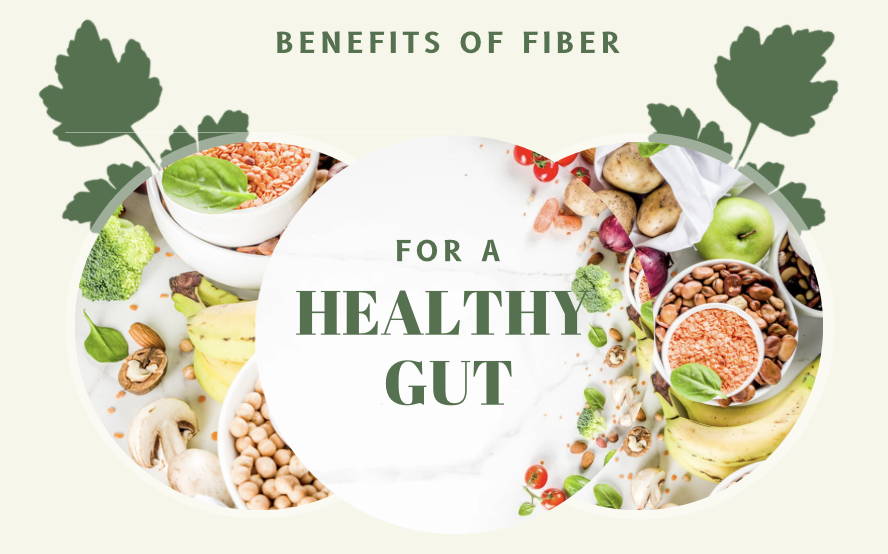No Products in the Cart
Why Is Fiber Important?
Within the realm of nutrition, protein always receives the attention and praise, but the real health goldmine lies within fiber. Fiber is the stuff that keeps us full, allows us to have regular and well-formed bowel movements, and therefore, helps clean out our insides. As an added bonus, a result of this ridding our bodies of unwanted toxins can help our skin appear more youthful and glowing. Fiber helps us maintain a healthy weight by helping us feel satiated, lowers blood sugar as well as cholesterol levels, improves our circulation, and can reduce the risk of cardiovascular disease. With these mighty benefits, it may be surprising that only about seven percent of adults in the United States reach the recommended amount of dietary fiber on a daily basis.
Written by:
CHARLOTTE VAN NOPPEN,
M.ED
"The vast majority of my patients are more worried about eating enough protein rather than fiber."

One of our doctors at the Institute of Plant Based Medicine, Dr. Angie Sadeghi, MD, explains:
“Although we have a problem with fiber deficiency in the US, the vast majority of my patients are more worried about eating enough protein rather than fiber. Everyday I see patients in my GI clinic and or the hospital with various GI problems who are consuming very little fiber in their diet which contributes to a myriad of GI problems such as colon cancer, colon polyps, constipation, and stool impaction just to name a few.”
The current recommended daily intake of fiber is at least 25 grams of fiber for women and 38 grams for men on a daily basis, however up to 70 grams for both men and women is considered safe. Not accomplishing a fiber intake of at least 25 per day may leave us vulnerable to chronic disease.
Naturally existing prebiotics and probiotics, a subgroup of dietary fiber, are necessary for a healthy gut. Prebiotics come from the fibers in plants that, when broken down, feed the health promoting bacteria within your digestive system. Probiotics are microorganisms that make a home in your gut. Creating a diverse microbiome within your gut is crucial for optimal health. Think of trying to paint with only one color, or watching TV stuck on only one channel…we may quickly grow tired of our one option. Our tummy’s also want variety! Fruits, vegetables, and whole grains all have potential for adding the pre- and probiotics our guts crave. Some of the foods rich in these healthy bacteria promoters include onions, garlic, asparagus, sauerkraut, and sweet potatoes. Adding more of the good type of bacteria crowds out the bad guys that could otherwise cause disease or inflammation. While there are many supplemental versions of pre- and pro- biotics available, the data suggests that it is not necessary to take a supplement but rather to include more whole plant foods.
Slow and Steady Fiber Increase
Fiber is naturally found in plants, so as soon as you incorporate more plants and whole-foods into your menu, your fiber intake will quickly increase. When you are switching over to a plant-based lifestyle, so long as you are not relying heavily on processed versions of plant-based food, you inherently are incorporating more plants which contain fiber. Depending on your starting point, this may mean ingesting more fiber than what your gut is currently used to. While fiber is extremely good for you, and very underrated in our society, it can cause distress to your system and lead to cramping and bloating if too much is incorporated too quickly. Below are some recommended ways to increase your fiber intake, slowly and steadily for a more comfortable transition for your digestive system.
Start with 2-3 grams increase per day. This could mean adding a banana, a couple tablespoons of ground flaxseeds, or a ½ cup of cooked brown rice. It is more difficult for our bodies to digest raw foods, so steaming, roasting, or sautéing your vegetables will make it easier on your system. Beans and legumes are spectacular at controlling blood sugar levels, however, eating large amounts of these foods may cause uncomfortable bloating. You may opt to start with fermented foods, such as tempeh, that are easy to digest. As you incorporate more fiber, be sure to drink more water to keep things moving through your system.

More Examples of Plant-Based Sources of Fiber:
• 3 oz of tempeh = 10g
• ½ cup of cooked black beans = 7g
• 1 medium pear = 6g
• 1 medium apple with skin = 5g
• 1 small potato with skin = 4g
• 1 medium carrot = 2g
While fiber has tremendous benefits, there are certain medical conditions that may require you to limit your consumption of dietary fiber, either temporarily or permanently. Please consult a doctor.
References:
How to increase your fiber intake in 2023. Noom. (n.d.). https://www.noom.com/blog/how-to-increase-your-fiber-intake-slowly/
Probiotics: What is it, benefits, side effects, food & types. Cleveland Clinic. (n.d.). https://my.clevelandclinic.org/health/articles/14598-probiotics.
Rodgers, B., Kirley, K., & Mounsey, A. (2013, March). Purls: Prescribing an antibiotic? pair it with probiotics. The Journal of family practice. https://www.ncbi.nlm.nih.gov/pmc/articles/PMC3601687/
Veganuary, K. (2021, February 18). How to use Dr Greger’s Daily Dozen. Veganuary. https://veganuary.com/en-us/dr-gregers-daily-dozen-checklist/